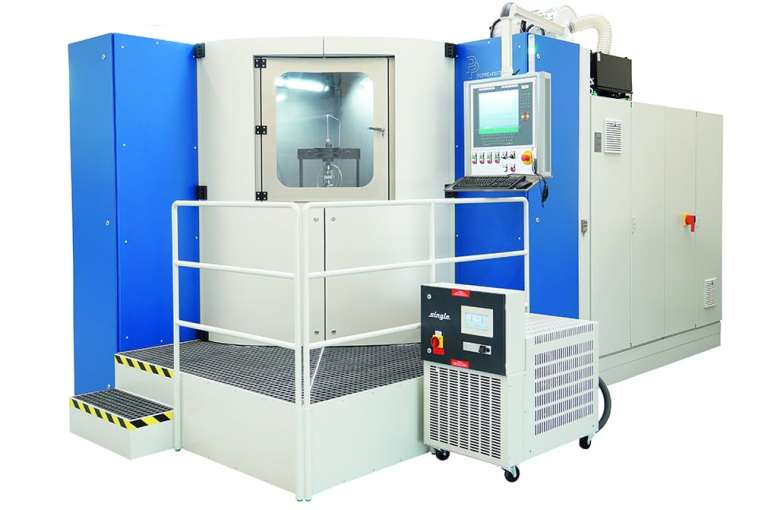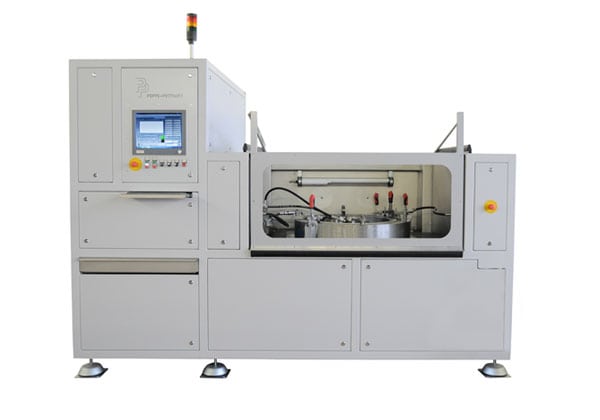Aerospace Component Testing
Aerospace Component Testing
- Pressure Test Benches
Aerospace Pressure Test Benches
Testing systems from Poppe + Potthoff Maschinenbau put fluid systems and components for aerospace applications through tough trials. In service life tests they are subjected to thousands of load cycles. Weak points can thus be identified and eliminated at an early stage. In this way, a level of quality is achieved that meets the highest safety requirements and strengthens confidence in the technology, which further advances the fascination for aerospace.
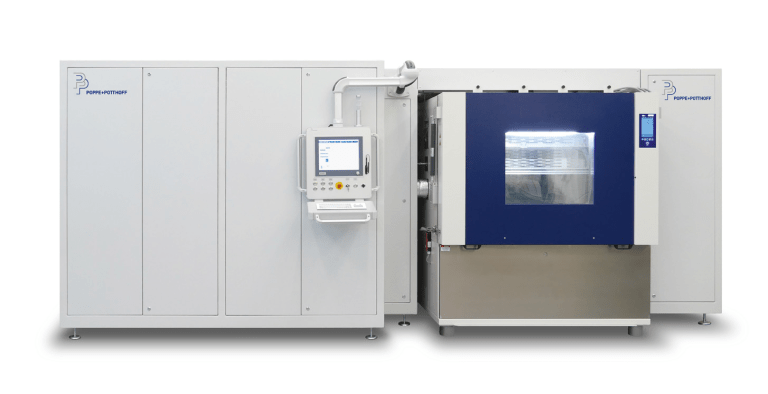
Stay Cool with Rising Pressure
With the PPM pulse test stand, Poppe + Potthoff Maschinenbau offers a powerful system for testing cooling elements for the aerospace industry. The electronics on board produce a lot of heat which has to be dissipated to ensure that the systems function reliably. The pulse test stand is used to simulate a controlled pressure change in different frequencies and pressure ranges. The system consists of two modules. The supply unit houses the pressure intensifiers, cooling and heating units and the control system. The actual testing takes place in a climate chamber in which the test specimens are tested at a media temperature of -40°F (-40°C) to +320°F (+160°C) and varying environmental conditions from -58°F (-50°C) to +320°F (+160°C). Simultaneously, up to four components can be tested independently of each other in the climatic chamber with the PPM 432. The pressure intensifiers are designed differently for this purpose: One generates a pressure of up to 1000 psi (70 bar), two are designed for up to 4000 psi (275 bar) and one for up to 6000 psi (414 bar). Aerospace oil is used as the test medium
Needle Peak, Sine or Trapezoid Test
The PPM 432 can change the pressure in up to 100 load steps per minute and sets pulses with a frequency of 0.2 Hz to 5 Hz. The test curve is usually controlled with a sinusoidal or trapezoidal curve. But also pressure holding tests and individual pressure curves with 10 points can be performed. Thus, all common test standards, such as ISO, UNI, SAE, ARP or MIL, can be flexibly fulfilled. The test stand is operated via an internal programmable logic controller (PLC) and a panel PC directly at the machine. The integrated LabView software from National Instruments enables efficient data acquisition and visualization. All test procedures and data are automatically stored by the system and can be exported to the network for evaluation. The open software structure allows additional sensors and data to be integrated during the tests. Poppe + Potthoff Maschinenbau adapts each system individually to the specific needs of the customer and also offers numerous testing services, remote maintenance and technicians on site.
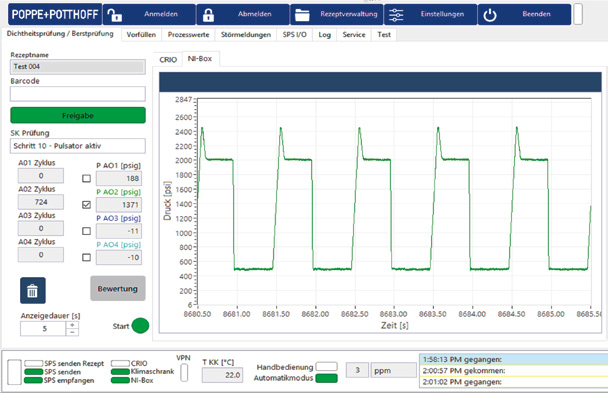
Perfomance Data – PPM 432 Pressure Cycle Test Bench
Dynamic test pressure min. 0 psi (0 bar)
Dynamic test pressure max. 1 x 1000 psi (70 bar)
2 x 4000 psi (275 bar)
1 x 6000 psi (414 bar)
Curve shape Sine | Trapezoid | Static
Speciality An individual pressure curve with a maximum of 10 points can also be set
Frequency 0.2 Hz-5 Hz
Load steps 1-100 per minute
Media temperature min. -40°F (-40°C)
Media temperature max. +320°F (+160°C)
Ambient temperature min. -58°F (-50°C)
Ambient temperature max. +320°F (+160°C)
Ambient alteration speed 1.5 K per minute
Test chamber size W x D x H 1500 x 900 x 900 mm
Test medium aerospace oil
Number of test specimens max. 4 (upon customer request)
Flow rate per test specimen 0-4 l per minute
Performable tests Pulse pressure test
Pressure holding test
Dimensions and weight Width: ca. 4808 mm
Depth: ca. 2369 mm
Hight: ca. 2333 mm
Weight: ca. 5000 kg
Global Test Standards
ISO, SAE, UNI, ARP, MIL, ARP
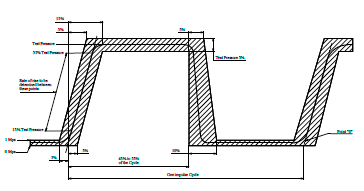
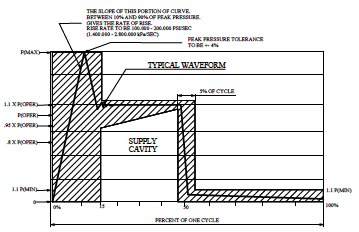
Test Standards for Trapezoid Pressure Curve
ISO 1436 rectangular curve form
IS0 6802 omega – horizontally shifted
ISO 8032 half omega test
ISO S1436
UNI EN ISO 6803 (DIN20024)
UNI EN ISO 6605
UNI 9540 rectangular curve form
UNI 9539 omega test – SQR curve
SAE J343 rectangular curve form
SAE J1405 (opt.) omega test
Test Standards for Needle Peaked Curve Shape
ISO 6772 peaked curve shape
ARP 603 peaked curve shape
ARP 1383 peaked curve shape
prEN 2624 peaked curve shape
MIL-A-5503E peaked curve shape
MIL DTL 8788D
MIL DTL 13531
ISO 6772 peaked curve shape

